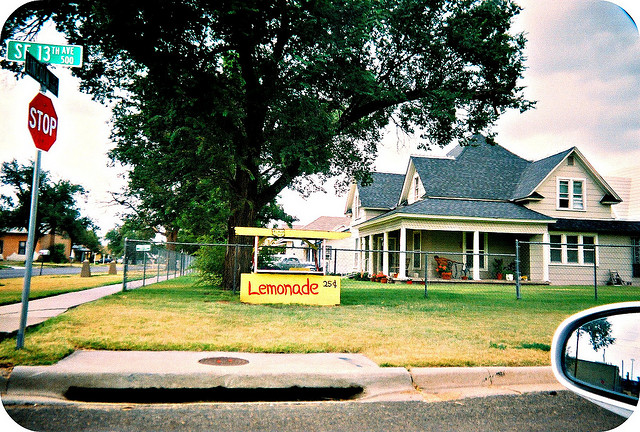Lemonade stands may appear on the surface to be simply about selling lemonade but when you look deeper, it’s much more dynamic. There’s the producer side, which produces the key ingredients. There’s the consumer side, which buys the ingredients to create the lemonade. And then there’s the supplier side, which supplies the materials and tools required to support the creation or sale of the lemonade.
The reason I bring this up is because I want a tall, cool glass of lemonade. And, more importantly, because I think this is a useful analogy when examining the sharing economy.
Fred Wilson recently had something to say about this type of economy when he wrote, “I think, in time, investors will move their capital into the assets that power the sharing economy, as well. And that may turn into a very large capital asset class.”
We often think of the peer-to-peer sharing economy to be the most efficient means of connecting supply and demand. Like our lemonade stand example, you have someone with a good who’s willing to sell it (producer), and you have someone else who’s willing to buy it (consumer). Put a marketplace in between by which to connect the two and you are good to go. But what if the marketplace is not so “efficient?”
Many of the startups driving the sharing economy depend on a good balance of supply and demand. If you go to Airbnb, rarely do you find a situation where there are no decent rooms available. However, many other nascent marketplaces are going through some significant growth pains in sustaining a balanced market. And when you are overweight on either side of the market, people quickly abandon it faster than a bum table on a casino floor.
I experienced this directly with one of these startups that tried to build themselves “the Airbnb experience.” This is just a catchy term for a place to book tours that were hosted by amateur tour guides. The idea was that passionate individuals could share their time and local expertise to people looking for unique activities. I used them for a while to manage bookings for my NYC dumpling tours and while it worked well due to my heavy promotion and word-of-mouth, many of the other tours got little traction. Quite frankly, many of the experiences offered were not all that compelling. While it could be said that they lacked enough buyers for their offerings, I believe it was the supply that was lacking. Eventually, they were bought, which was really the best outcome given the lack of a truly robust marketplace.
Despite the experience, I do believe in the sharing economy. This is what Fred is getting at, and what I have been seeing on the ground, which is the rise of the third leg in this new economy: the suppliers. I think that for startups to ultimately succeed in this space, it’s going to take more than simply a marketplace engine or even a strong presence of producers. They are going to need market makers to keep these markets moving with enough supply to keep the consumers coming.
A market maker in the trading world acts as a means to ensure liquidity so that there is always enough bids and offers to maintain pricing levels. They are especially important during sharp spikes in buying or selling, which is when they help to stabilize prices. Without them, some financial instruments simply would not be able to trade.
I believe that we are going to see the rise of similar entities in the sharing economy that will help to keep an orderly and active marketplace. This is particularly true in markets that experience constrained supply, or simply do not have a large supply to begin with. Either the marketplaces are going to have to own some of the supply-side, or third parties are going to provide the supply and act as those market makers. It could also be a hybrid of the two concepts. Whatever the structure may be, this third leg of the sharing economy is going to be a big deal.
This article was originally published on Strong Opinions, a blog by Birch Ventures for the NYC tech startup community.




